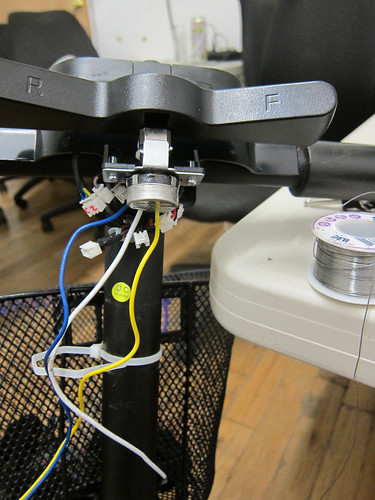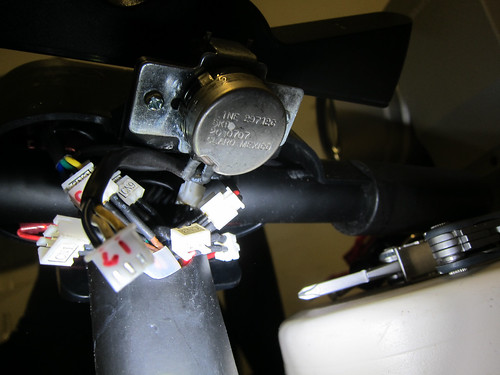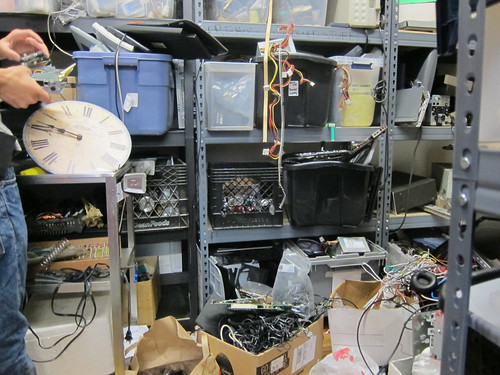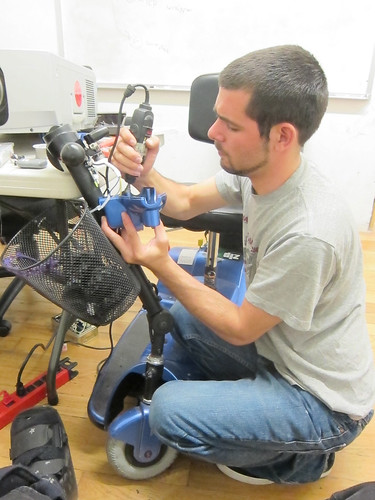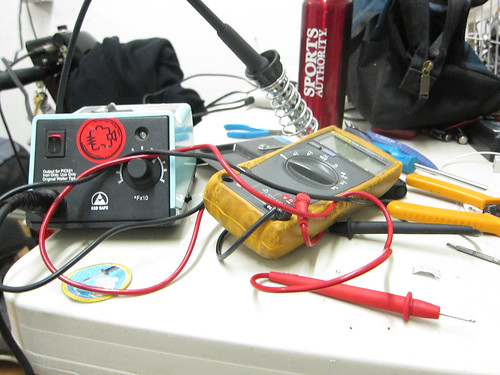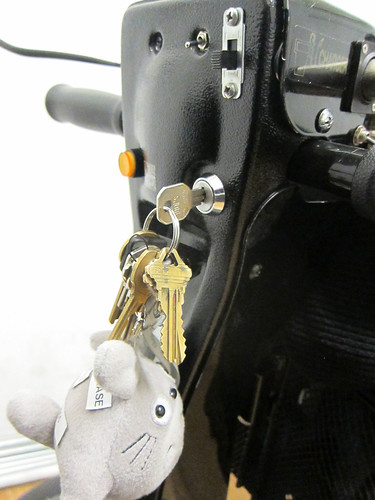Mischi says in comments,
The fallout from this whole Amina/Paula Brooks mess has really spooked me. I’m starting to wonder how many other individuals on my twitter or facebook feeds might be equally “unreal”.
So, I have to ask: are there any clues or patterns one should be particularly careful to pay attention to?
Also, what are the different kinds of motives that might compel someone to create sock puppets that have such a long and involved online presence (as both “amina” and “paula brooks” seemed to have). Some people here are suggesting they could be motivated by a desire to gather intelligence and/or disrupt activist organizations… but surely there must be other reasons? I mean, “Paula Brooks” wrote about surfing — what was the motive here? I’m just confused, and more than a little bewildered.
Anyway, it would be nice to get more insight into the world of sock puppets (a term which until a week ago I had never heard of, but now can’t stop thinking about!). Again, thanks!
Good questions Mischi – we could talk about that all day.
I think that members of long-standing organizations and communities often have developed the discernment to recognize likely instances of people who are not quite who they say they are, *and* the difficulty and offense of proving that. People who percieve themselves, also, as being in a less powerful situation or in danger have to hone their judgement.
Growing up in the 80s in Texas, I learned how to have good gaydar. People who are online a lot, who live out important parts of their lives socially online, have good sockdar.

Just as there’s no one motivation for masking or fictionalizing identity, there’s no one tip-off for who is real, and how far they’re trustable.
In most cases, I don’t care — and I don’t have to care — if a person is representing themselves with complete accuracy. Your situation might be different and you need to know you’re not being Facebook-friended by your abusive ex-boyfriend or some weird lying person from your past or an International Woman of Mystery or an FBI agent who just infiltrated your animal rights activist group.
Anonymity and pseudonymity can help people to have a public voice who might otherwise find it difficult to make their thoughts known. Not everyone can be out of the closet! So, while it’s legitimate to worry about who you’re talking to, ask yourself perhaps — does it matter? If it does, how would this conversation change?
If you care a lot about it, you could video chat with them briefly, or verify from someone you both know that there’s been a face to face meeting.
If I want to know, and I care, then I’ll just ask. It’s okay to be rude. If someone’s identity is a bit thin, and it’s reasonable to want to know who you’re speaking with, and they’re real, they should understand why you need to ask. If, on the other hand, they come up with reasons why it would be outrageous to ask, or know — maybe that should be unacceptable to you. If the person keeps missing your meetings and the excuses get more and more strange, that’s another clue!
I think we see here also in this entire fucked up mess that asking your friends for help is a great technique to triangulate on reality! Look at the great stuff in the comments . . . People are still working together to figure out who Graber is, and who he’s fooled, and what damage has been done. Because of that, more people will be protected against him in future. (And maybe he’ll get some kind of of real help, if he’s helpable.)
People have been asking me — what’s a sockpuppet? What’s astroturfing? Astroturfing is “fake grass roots” — many shallow fake identities created to give an illusion of popular support and interest. Astroturfing could be lots of voters from different IP addresses with different logins, gaming a voting system, or many people talking about how great a product is. Because of astroturfing’s volume and potential sophistication, it may be best detected by building good software tools. People who think a lot about botnets and spam-fighting are probably best equipped to talk about astroturfing — though as Mechanical Turk and other tools are used more often for astroturfing, this will get more difficult.
By “sockpuppets” I usually mean a persona of some depth. (Picture a person wearing a sockpuppet and having a conversation with it.) Wikipedia pages are often places where you can easily find a pattern of unsophisticated sockpuppetry. Several new accounts spring up to edit the same article. If they’re all from the same IP address, that’s a dead giveaway.
Sockpuppets are there to talk to each other. Writers make sockpuppet friends or enemies, drama-filled relationships, or conversation partners. Ms.Scribe would make a somewhat obvious sock to accuse herself of not being real. Someone else would then expose the attackers. Ms.Scribe would become more solid and look more more important. I’ve seen Wikipedia edit wars where several people follow a pattern of argument. Alice will propose something outrageous, Bob will come along to disagree by saying something even more outrageous, challenging Alice; Alice refutes Bob and then Bob admits Alice was right after all. They make puppeets to debate with about why the sky is green.
Plain Layne on the other hand looked to me like a “literary experiment” gone wrong over time. There I saw that the specific locality of Layne’s blog and how she described her life led to the other bloggers in her town to expect to run into her. In the earlier days of blogging, people didn’t think that they would be noticed, or found, or develop real life friendships. Some of us might know better these days. MacMaster didn’t.
The story of Victoria Bitter shows some very interesting patterns that remind me more of Paula Brooks and LezGetReal than of Amina’s hoax. Amy Player/Victoria Bitter/Andy Blake shifted identity several times in real life and went through a gender transition. They also defrauded people of money – and somehow, all this tragically led to a triple murder-suicide in May 2011. As the documenters of Victoria Bitter point out, Andy Blake is still around and is still – amazingly quickly after his friends’ deaths – playing out the same patterns of asking for money and engaging with communities that care about LGBT issues and about fiction.
It seems difficult for identity-performing people to resist *engaging with themselves*. I think they also get very tempted to engage directly with people who are beginning to get suspicious about them. It must be like taking a dare, or pushing one’s experiment to its logical extremes. How far can it go? Maybe it’s a power rush, like the feeling of power a fiction writer gets as they move their characters around inside a story. The sense of psychopathy people talk about when they have been involved with sockpuppets may relate to this feeling of power and manipulation.
But I remember the story being more complex as I think of Plain Layne. She would reach a crisis in her life, or would be challenged by a commenter who’d say she couldn’t be who she says. And I’d intervene and comment myself, saying, “But she *could* have had crazy great sex on her first date because…” or “Well, you are all saying she shouldn’t take in her teenage cousin’s baby — but I’d admire her if she did” and then what I predicted *would happen*. Layne’s author would take suggestions or cues from commenters, and would play them out. We all had, now and then, the pleasure of feeling we were right in our advice, or our predictions of how Layne would feel about her choices and why.
With fictional personas of less well established boundaries, I think that kind of thing can have feel like talking with a person who’s schizophrenic and who incorporates anything you might mention into their fantastic ramblings. It feels *off*. There can be a pattern of boundary violation. Some sockpuppet hoaxers, like Bill Graber, seem to have incredibly bad boundaries right from the start. I mean, I don’t have the most fabulous boundaries either, and not a lot of instinct to stay away from drama, or I wouldn’t have kept on poking into this entire mess — but I’m actually nice, and exist, and have a life, and all that.
I’ve been thinking for the past few days about science fiction fandom and its online communities. Fans who write transformative works have been using pseudonyms, and developing chains of trust and reputation based on those pseudonyms, for a long time. In other words, if you make vids about characters who are owned by someone else, and build up your reputation with that as your art, you have good reason to hide your identity, because you don’t want to be sued.
For sockpuppet detection, it’s important to document the process of unravelling a hoax — the red flags, dead ends, and all the threads and evidence. Investigators screengrab and archive chats and photos or copy entire websites, which might turn out to be crucial traces of a sockpuppetry nexus or a Very Complex Internet Drama — before the perpetrator or a community moderator deletes the evidence. They’re archiving events and documenting extended public conversations. That’s a skill and a way of thinking that’s still evolving very quickly.
You can also look at people’s IP addresses, times they come online and go offline, and so on.
If you’ve been in activist groups of any kind it seems fairly usual for someone to point a finger at someone else who is a bit disruptive and accuse them of being an infiltrator. That can be a destructive process in itself, unfortunately.
While there do seem to be various patterns of behavior I think part of the sockdar we have at our disposal – especially as sophisticated readers – is about the use of language, being in the same register of formality, and speaking the same way. There are also differences in what sites a persona joins. A skilled hoaxer can fake those things of course! I’d like to know if other people notice particular things that affect their judgement of a person’s real-life existence or their sincerity?
I’ve got to stop writing for the day [ETA: I wrote this 8 hours ago and thought I posted it, but it was still in draft!] but I’d love to hear what others have to say on this topic. There is plenty to say as well about literary hoaxes (going back to JT Leroy, Nasidjj, Margaret Jones/Peggy Seltzer, and so many others). How do you smell a rat? Have there been situations where you have figured out someone’s real or not real?
[Also ETA to add, I am still researching and thinking about who the hell Bill Graber is, but needed to stop and write this, partly because it is what everyone calling to interview me is asking. Will post tomorrow about Graber and so on. Who the hell is Graber? Is that really his name? Does he have some overall agenda? Is he just independently kind of . . . not sane, having maintained an alternate identity for years and then totally melting down? I don’t buy the theory that he’s a secret agent of a government.. but it’s more plausible that he could be a disrupting agent of conservative/anti-gay organizations.]





